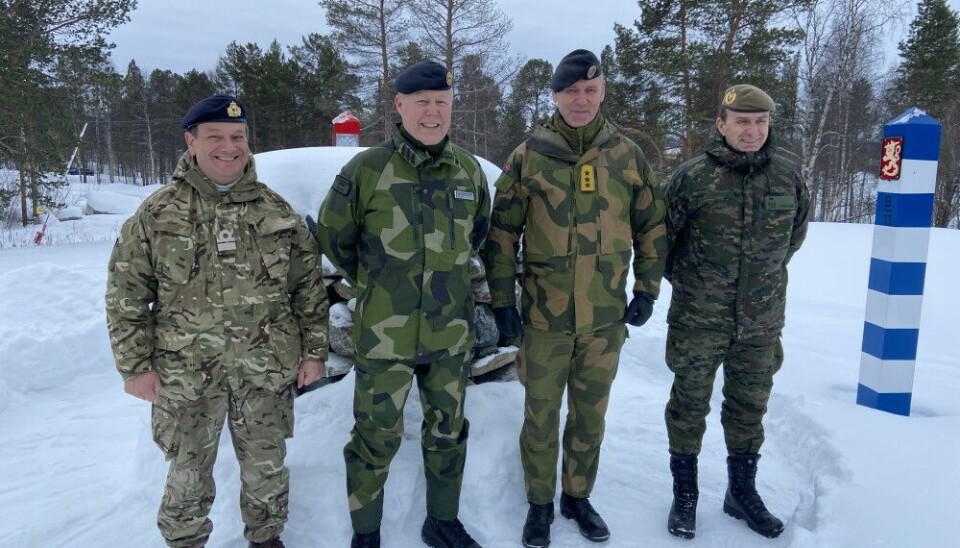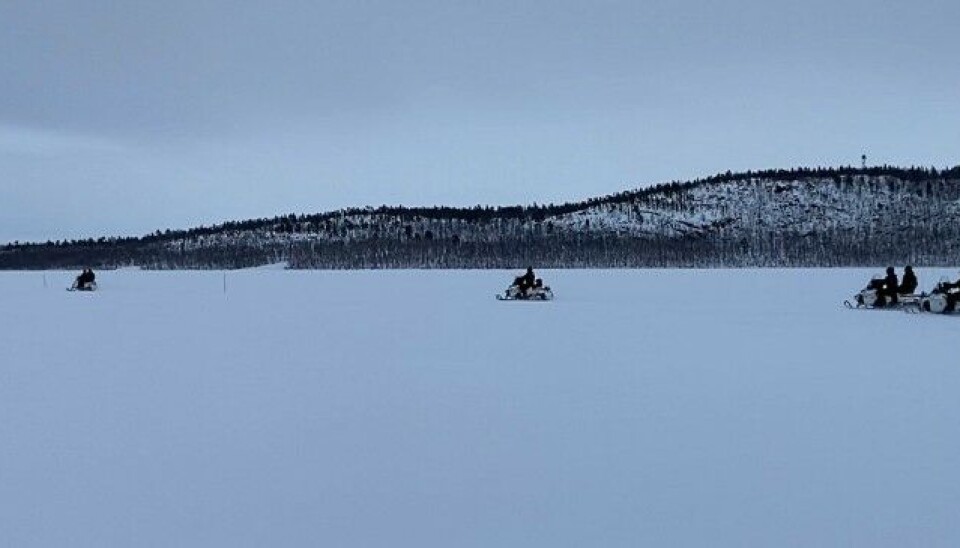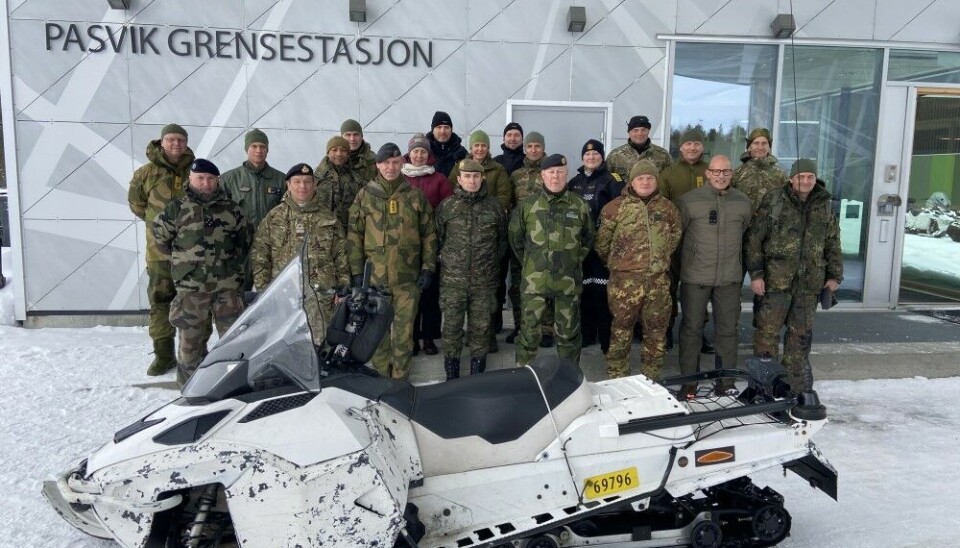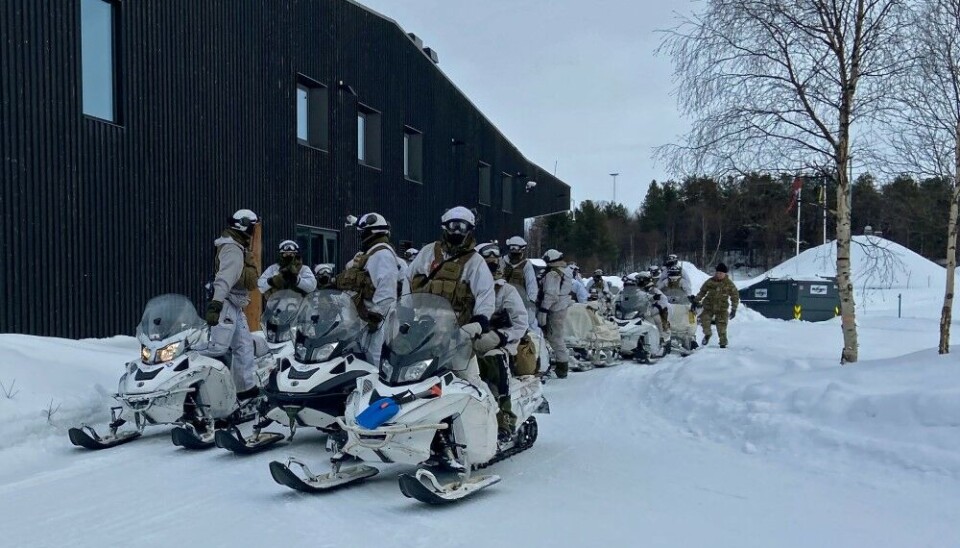Key NATO commanders teamed up with newcomer Sweden at northern border with Russia
PASVIK: Amid rising tensions with Putin’s Russia, NATO strengthens its northern security cooperation. Never before have there been more high-ranking commanders on Norway’s border to the strategically important Kola Peninsula.
“I’m very happy about the political decision to become a part of NATO,” says Lieutenant general Carl-Johan Edström, Chief of Joint Operations with the Swedish Armed Forces. On Thursday, he flew north together with the largest group of top NATO officers that ever has been at Norway’s land border with Russia.
“Now we can be a part of a huge NATO organization and the deterrence that we need in the situation that we facing at the moment with a war in Europe,” Edström says.
Visiting Stockholm this week, NATO Secretary General Jens Stoltenberg said the accession of Sweden and Finland “is a top priority, and we are making progress.”

The officers from different countries and command structures of NATO came directly to Kirkenes airport from the ongoing exercise Joint Viking currently taking place in the Troms region, further west in Northern Norway.
At Pasvik Border Station, the group got a briefing about the Norwegian-Russian border, likely the frontier between Russia and Europe with the least tension.
The border follows the Pasvik River and is patrolled by army soldiers doing the job on behalf of the Norwegian police. On the east side of the river banks, Russia’s FSB is in charge.
Although a few illegal border crossings have happened in recent years, both countries have very good control in the remote wilderness here far north inside the Arctic Circle where temperatures can drop to minus 30 degrees Celsius this time of the year.

Leaders from two of NATO’s three operational commands were present in Pasvik, the Joint Force Command (JFC) Norfolk in the United States and Joint Force Command Brunnsum in the Netherlands.
Rear-Admiral Tim Henry is second-in-command at JFC Norfolk, focused on securing trans-Atlantic lines of communications.
“Here we are in Finnmark today very close to the Russian border. It is very important, we are in Norway on NATO territory and this is fundamental to NATO’s thinking and planning, to deter and to defend. This is the center to this part of this area,” Henry says.
The Rear-Admiral makes clear that NATO will be visible in the northern regions, including in the Barents Sea.
“NATO is always conducting exercises, always seeking to adjust its activities with what it sees is going on so we will continue to operate where we are able to operate. We will continue to operate as an alliance and also make sure we are ready to deter and defend.”

A scenario now drilled during Joint Viking 2023 is the reinforcement of northern Scandinavia in case of conflict. Bringing troops and weapons from North America to Norway is an essential part the military planning. With Sweden and Finland soon to join NATO, bringing reinforcement further into the two countries from Northern Norway is a new part of wargames training.
US Expeditionary Forces and Airborne Troops have more or less constantly been training together with the Finnish and Swedish Army and Air Forces since Russia started its all-out war on Ukraine last year.

For Lieutenant general Yngve Odlo, Chief of Norway’s Joint Headquarters, bringing NATO colleagues to the actual border with Russia is important as the challenges up North are different from other areas of Europe. Odlo agrees that the defense options for Norway will get stronger with Finland and Sweden joining NATO.
“It will be a new landscape. It will still be three independent nations within hopefully a NATO alliance, so the strategic landscape will change, but again we will work together to be able to defend ourselves, not attack anyone,” the Lieutenant general underlines.
Commander Odlo is not worried about Russia seeing it as a provocation that such large delegation of NATO top officers visit the doorsteps to one of the most strategical important areas.
Russia’s fleet of ballistic missile submarines, armed with nuclear warheads that can reach North American territories, are based in Gadziyevo on the coast to the Barents Sea, some 100 kilometers from the border to Norway.
While the Russian president claims one of his objectives is to keep NATO at distance, the 200 kilometers long border to the North Atlantic Alliance in the Pasvik valley proves to be the country’s most peaceful of them all. Moscow has during history been at war with all of its European neighbours, except Norway.
The clearest sign that Russia isn’t afraid of any trouble with NATO in the north is the fact that most troops previously based in the Pechenga region near the border with Norway were sent to the all-out war on Ukraine last winter.
Norwegian Intelligence Service last month said as much as four-fifth of the soldiers and armoured vehicles from the areas near Norway where transported to Ukraine.















